Flightless birds used to be the biggest and heaviest terrestrial animals found on island chains. These birds migrated to their island homes, set up camp, and evolved in special ways due to a lack of natural predators. They also went extinct faster than most animals once they made contact with humans.
As they evolved on their island habitats, their wings became truncated and they could no longer fly. There are extant flightless birds still like the cassowary, emu, and ostrich but all of the animals on our list are gone forever. What are 10 flightless birds that are extinct?
10 Extinct Flightless Birds
These are 10 of the flightless birds that have gone extinct:
- The Rodrigues solitaire
- The Flightless Sea Duck
- The Moa
- The Dodo Bird
- Megavitiornis Altirostris
- The Elephant Bird
- Sylviornis Neocaledoniaerostris
- Eleutherornis Cotei
- Remiornis Herberti
- The Molokai Flightless Ibis
1. The Rodrigues Solitaire (Pezophaps Solitaria)
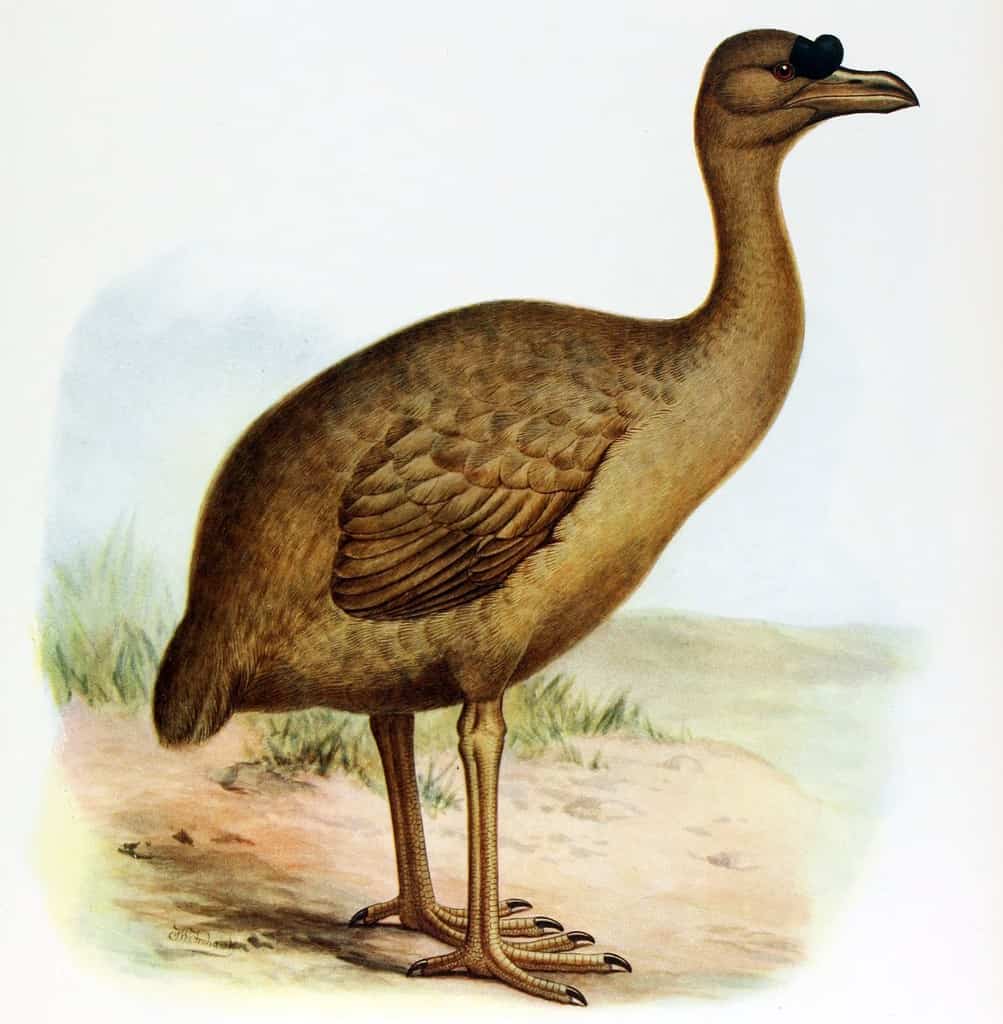
Rodrigues solitaires went extinct around 1760.
© Frederick William Frohawk / public domain – Original / License
The island of Rodrigues, which lies east of Madagascar, was home to the Rodrigues solitaire. This flightless bird was endemic yet closely related to the dodo. It was about the size of a swan.
Rodrigues solitaire was grey and brown, with males being darker than females. It had a long neck and legs with wings that had bony protrusions that were used in battle. It was discovered at the beginning of the 17th century and went extinct by the end of the 18th. The bird most likely fed on a combination of dates, fruits, seeds, and leaves.
The usual culprits are to blame for the bird’s extinction. Overhunting and the introduction of invasive animals likely decimated the population. The tortoise trade brought a lot of human development to the island between 1730 and 1750. It’s believed the Rodrigues solitaire was extinct by 1760.
2. The Flightless Sea Duck (Chendytes Lawi)
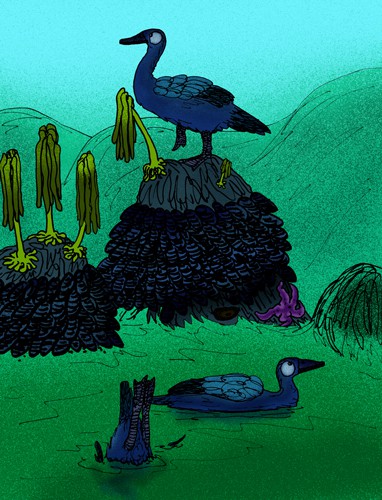
The flightless sea duck was driven to extinction by hunters around 2,400 years ago.
For 8,000 years, humans hunted this bird. It is likely what drove it to extinction. It disappeared about 2,400 years ago.
Fossils along the coast of Southern California show that the bird was hunted on the mainland for approximately 11,000 years. They were hunted on the islands off the coast of southern California for at least 8,000 years.
These ducks were about the size of modern geese and ranged freely between southern Oregon and southern California. They fed on invertebrates.
3. The Moa (Dinornithiformes)
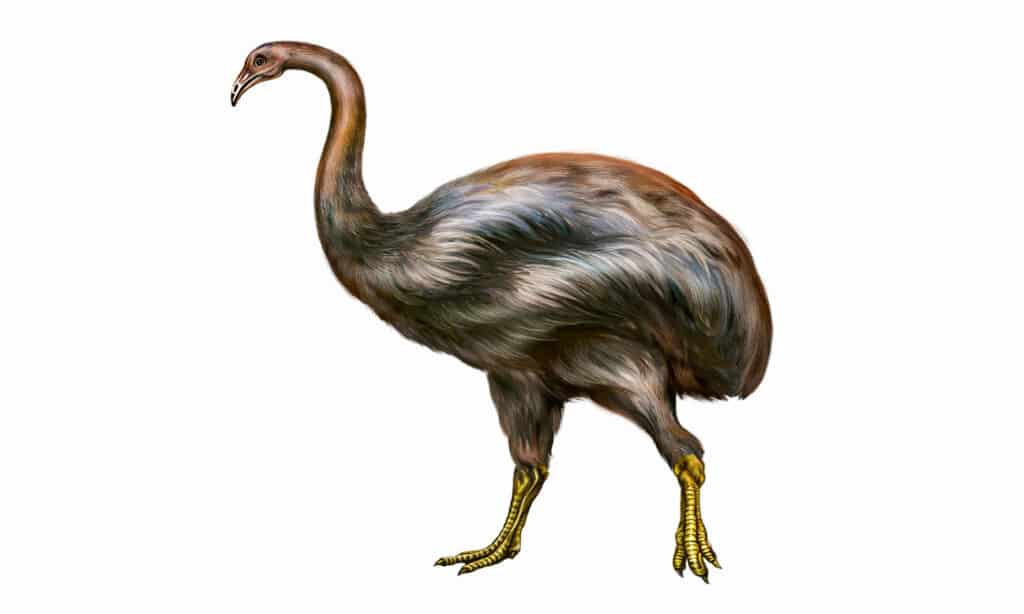
All 9 moa species are extinct.
©Liliya Butenko/Shutterstock.com
The Moa were flightless birds endemic to New Zealand. There were 9 species in total and all of them are extinct. The largest was 12 feet tall and the smallest was the size of a modern turkey. These birds had no vestigial wings like most other extinct flightless birds.
They went extinct about 100 years after they were discovered by the Maori and hunted.
4. The Dodo Bird (Raphus Cucullatus)
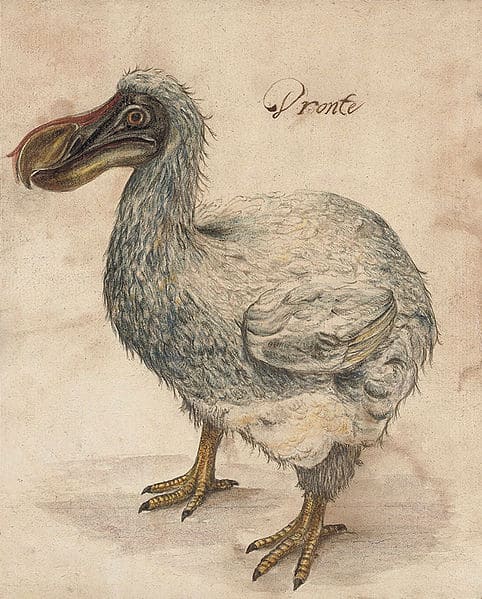
The dodo is another flightless bird that was hunted to extinction.
©Dutch School, 17th Century – Public Domain
The dodo is the most famous extinct flightless bird as it’s become an icon for the fragility of ecosystems as well as of stupidity. It was considered a stupid bird because it didn’t know to avoid humans as it had no natural predators on the island of Mauritius. It was endemic to the island.
The bird was first discovered in 1598 when the Dutch found Mauritius. Mauritius is so isolated that it did not play host to humanity before the Dutch arrived. Within 100 years of its discovery, the dodo was hunted to extinction by both humans and invasive species.
5. Megavitiornis Altirostris
These flightless birds lived in Fiji and were endemic to the island. It was probably the largest bird on the island while it was alive.
Not much is known about this bird as it was just recently discovered and there aren’t many fossils to study. We know it was flightless because of its large size and the shaping of its pelvis area and breast bone.
It had a huge beak that was up to 28% of its length. It probably used this beak to eat the hard seeds found in fruits native to the island that modern birds are unable to crack.
6. The Elephant Bird (Aepyornis Maximus)
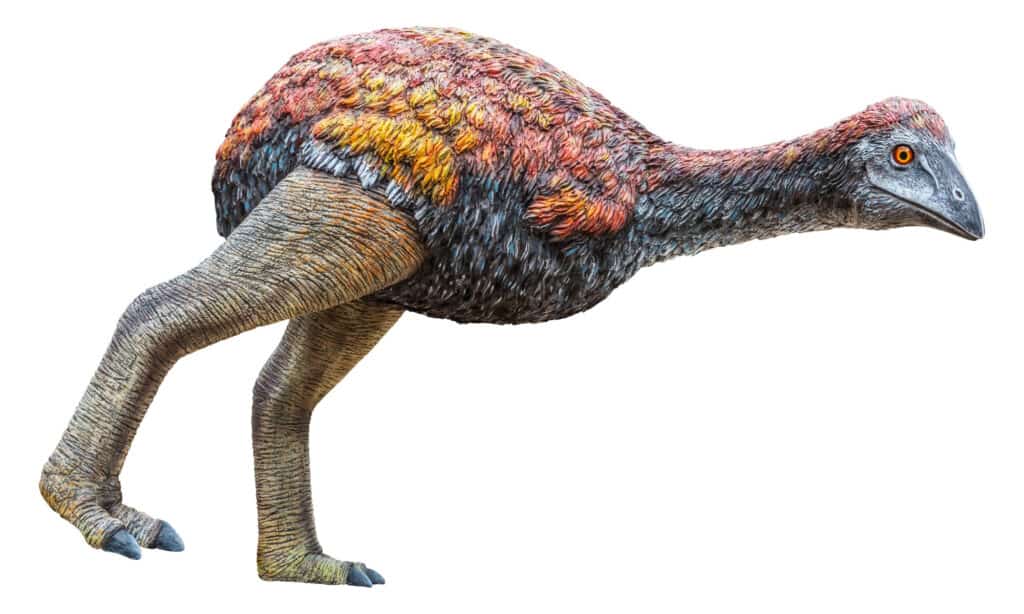
The
elephant
bird was extinct by 1200 CE.
©YuRi Photolife/Shutterstock.com
Elephant birds were from Madagascar. Humans probably drove them to extinction by 1200 CE though there were claims of sightings well into the 17th century.
Nobody knows exactly how they lived because their rainforest habitat is not conducive to the creation of fossils. Their eggs were large enough to feed a whole family.
7. Sylviornis Neocaledoniae
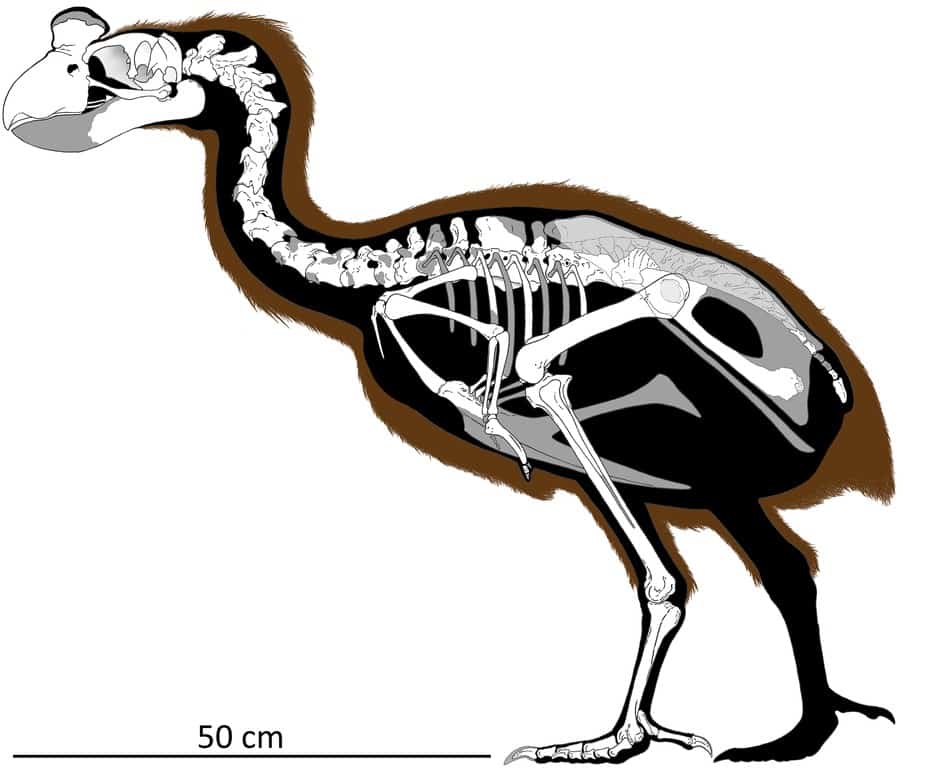
Sylviornis was hunted to extinction.
©Trevor H. Worthy,Miyess Mitri,Warren D. Handley,Michael S. Y. Lee,Atholl Anderson,Christophe Sand / CC BY 2.5 – Original / License
This bird was a giant that went extinct after humans arrived on their home islands. They lived in New Caledonia through the Holocene and they were most likely hunted to extinction no later than 1500 BC.
Descriptions of this bird live on in the oral traditions of the Kanak of New Caledonia. Scientists go back and forth on this bird’s exact classification and habits as fossil records only provide clues. Its closest relatives are probably pheasants and turkeys.
8. Eleutherornis Cotei

The partial remains of Eleutherornis cotei were found in France and Switzerland.
Eleutherornis cotei was medium-sized. They came from a family of birds known as “terror birds.” It was probably about 5 feet tall. They were called terror birds because they were carnivorous.
These specific bird remains were found in France and Switzerland which suggests that birds related to this one migrated into Europe earlier than previously believed.
9. Remiornis Herberti
Remiornis herberti is one of the oldest on our list. It was around during the Paleocene which was approximately 60 million years ago. They were distant relatives and similar in appearance to rheas.
Their exact behaviors and habitats are unknown. Fossils have been found in France but these fossils are just skeletal fragments.
10. The Molokai Flightless Ibis (Apteribis Glenos)
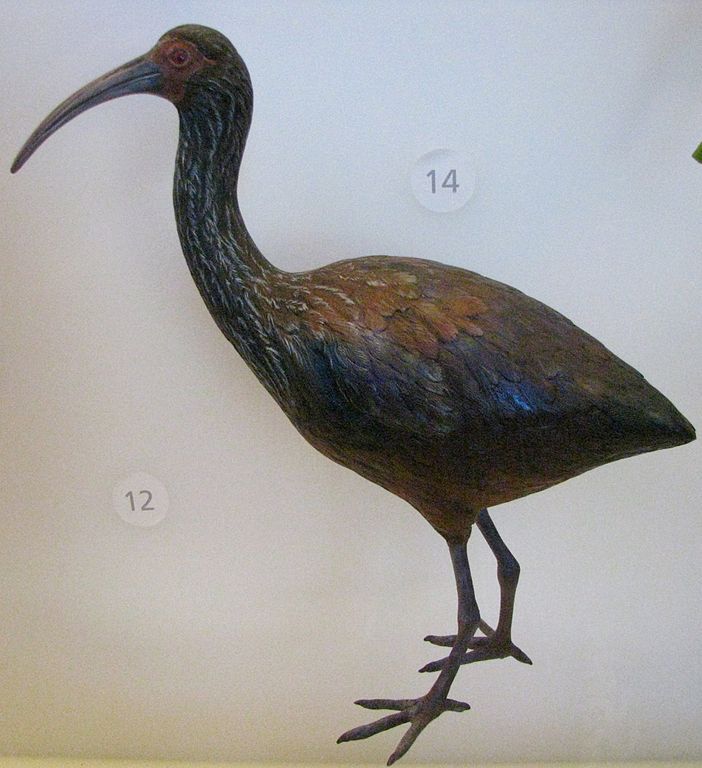
Molokai flightless ibis hung out on forest floors.
©David Eickhoff from Pearl City, Hawaii, USA / CC BY 2.0 – Original / License
This bird lived on Maui and Molokai in Hawaii and was endemic to the islands. It was small for an ibis and liked to hang out on the forest floor.
Up until about 200,000 years ago, the aforementioned islands and a few others were part of a mega island in Hawaii called Maui Nui. When sea levels rose about 200,000 years ago, it separated this mega island into the smaller islands we see today.
This fragmentation is why endemic birds are found on different islands but not all of the Hawaiian islands. It was probably brown and beige.
Up Next:
The photo featured at the top of this post is © YuRi Photolife/Shutterstock.com
Thank you for reading! Have some feedback for us? Contact the AZ Animals editorial team.







